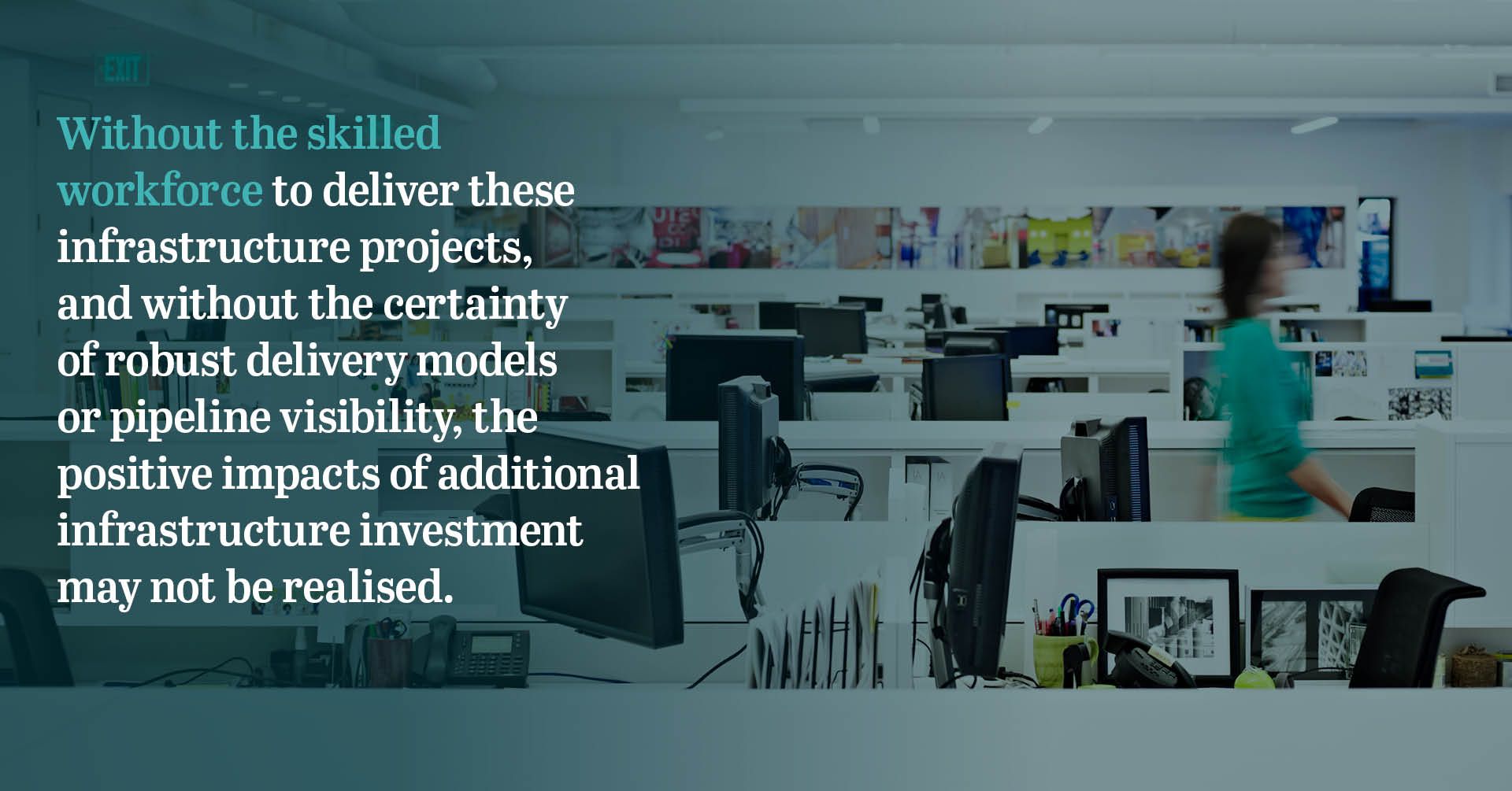Ken Bagget Industry Director — Rail, Australia New Zealand
Infrastructure has a role to play in helping the economy recover from coronavirus. Given the scale of disruption, we have an obligation to see taxpayer funds used as effectively as possible. We need to seize the opportunity to fix issues that have long been ignored.
In times of crisis, government often turns to infrastructure to stimulate economic recovery. Throughout 2020 — a year of constant crisis — infrastructure investment was again recognised as a way of maintaining economic activity and protecting jobs. This led to governments across Australia increasing spend on existing projects and finding additional funds to bring new projects to market sooner.
Importantly, throughout the pandemic, project staff were classified as essential workers, enabling the design and construction of major transit projects to continue at pace. This shored up sector confidence, protected jobs and softened the financial impact of lockdowns.
Success throughout 2020 served to highlight and, in many cases, exacerbate pre-pandemic challenges relating to shortages of talent and materials, risk imbalances and pipeline uncertainty. All these factors contribute to cost overruns, project delays and capacity concerns.
While small cost overruns on small projects can be challenging, today we are in the era of the ‘mega’ transport projects (those costing NZ$1billion or more), where overruns account for hundreds of millions, if not billions, of dollars.
According to the Grattan Institute report, ‘The rise of megaprojects: counting the costs’, Australian governments are committing to a record number of ‘mega’ transport projects, exposing taxpayers to ‘mega’ risks of cost blowouts. Ten years ago, there was just one transport infrastructure project in Australia worth more than $5 billion. Today there are nine, and costs have already blown out by AU$24 billion on just six of them.
Over the past two decades, Australian governments spent AU$34 billion more on transport infrastructure than they originally planned to. That equates to three times the AU$11.5 billion annual Federal Government infrastructure spend committed to in the 2020-21 budget.
As vaccination rates increase and economic disruption dissipates, the onus is on our industry to ensure that the investment unlocks as much potential as possible. To do this, we need to fix long-term structural issues impacting confidence, productivity and efficiency, or face the prospect of infrastructure investment and delivery continuing to underperform and constrain long-term economic growth.
Two long-running issues, exacerbated by the crisis, have been identified, which threaten to curb the benefits infrastructure can bring.

Talent constraints
The road and rail industry faces significant talent shortages, which are expected to drive up wages in the next 12 to 18 months. Some of the most challenging roles to fill are essential to project delivery, and the inability to source overseas talent may cause delays. Typically, global engineering professionals are very mobile, but caps on international arrivals and restricted quarantine capacity make it extremely difficult to access this talent pool.
According to a December 2020 survey by Consult Australia, the industry body that represents design, advisory and engineering businesses in Australia, the main challenge is the lack of experienced and qualified individuals available in the local talent market.

It is standard practice on large transit projects to recruit international technical experts to support, train and develop the specialist local capability. Given the number of complex metro projects in the works across Australia, there are shortages of skilled people with experience in rail systems, underground station design, tunnelling, construction and project integration.
The ongoing restrictions on international travel contribute to a lack of talent that threatens the delivery timetable for the current pipeline of major projects.
The domestic engineering and construction workforce — and particularly those skills across road and rail — will also see their value soar as the market fights for talent; significant wage inflation will be the result.
Unsustainable delivery risk
Many of the largest contractors based in Australia are at, or nearing, capacity. They are facing the same talent shortages and are increasingly likely to decline to bid major new projects as a result of the increasing risk burden under certain procurement models.
These issues contribute to a lack of competitive tension in the marketplace; project costs are driven up, commercial models require adjusting, and project delays are the result.
Encouragingly, there has been a return to more collaborative, alliance-style contracting models in many jurisdictions, which is perhaps a recognition of these models’ effectiveness in procuring most of the mega metro and transit projects. That said, the transit industry thrives on certainty, and presently there is a lack of it across three main areas:
- Certainty of delivery model: considering the length of time mega projects take to be scoped and procured, providing certainty to the industry about the commercial model is likely to create more competitive interest from the market, and a better outcome for the taxpayer
- Certainty of timing: enhanced pipeline visibility allows better resource planning
- Certainty of design: a detailed and rigorous reference design can help respondents better understand and manage risks they are expected to own.
With more certainty — projects can be delivered with more confidence.
Collaboration is the key
Governments across Australia are committed to delivering an infrastructure pipeline to meet the post-pandemic challenges, and in turn support jobs that sustain economic recovery. But without the skilled workforce to deliver these infrastructure projects, and without the certainty of robust delivery models or pipeline visibility, the positive impacts of additional infrastructure investment may not be realised.